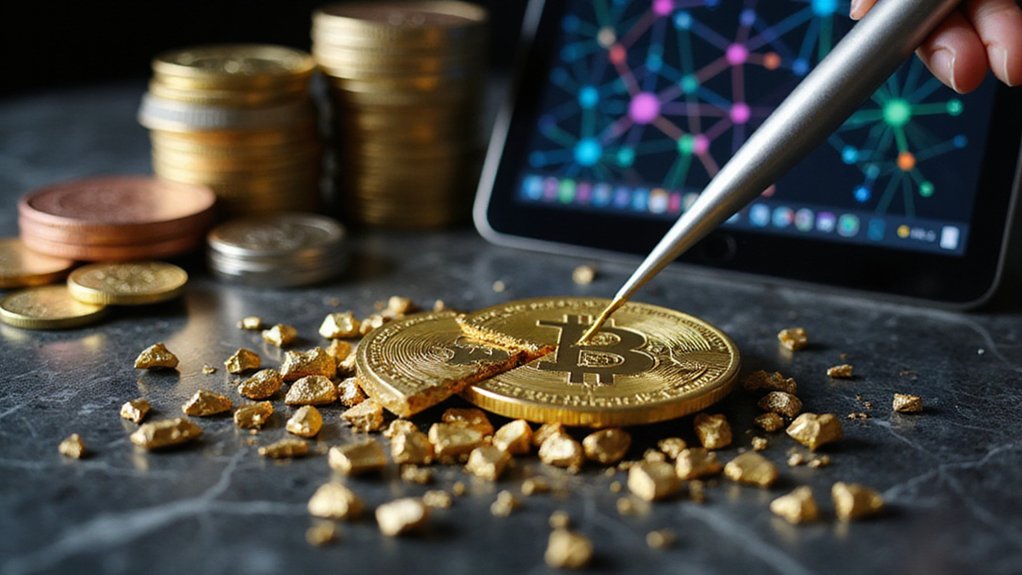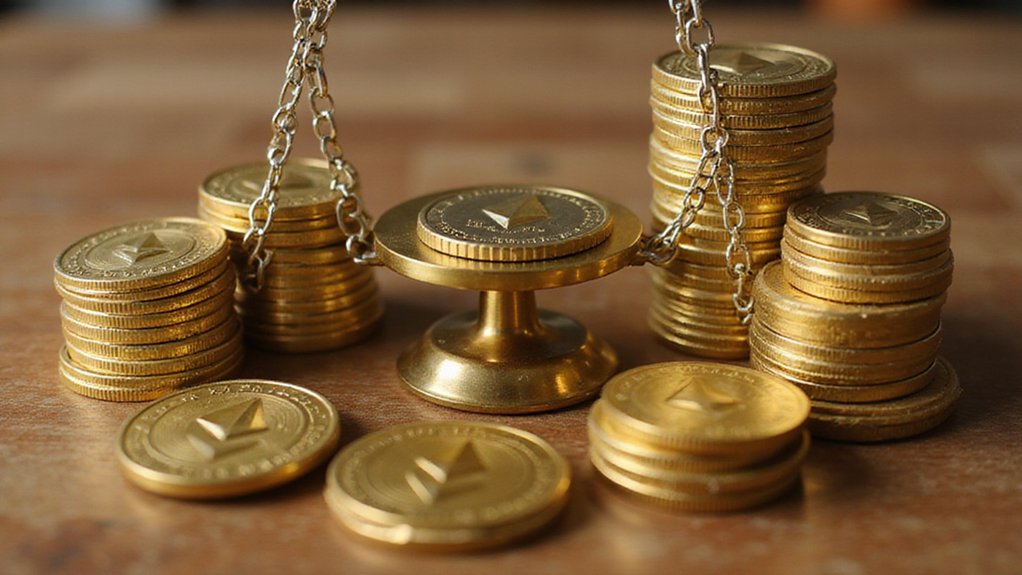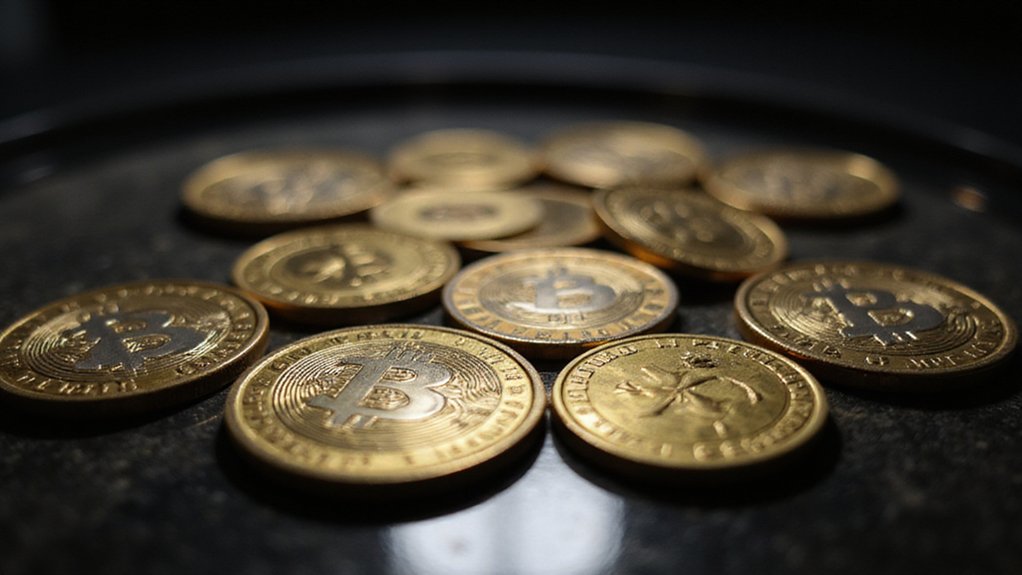Fractional ownership in cryptocurrency leverages blockchain tokenization to slice traditionally indivisible assets—real estate, artwork, collectibles—into tradeable digital portions represented by tokens on distributed ledgers. Smart contracts automate dividend distributions and ownership transfers while ERC-20 and ERC-721 standards guarantee interoperability across networks. This mechanism democratizes access to high-value investments previously reserved for institutional players, though regulatory ambiguity and smart contract vulnerabilities introduce novel risks that merit closer examination.

The financial industry’s perpetual quest to slice, dice, and repackage assets has found its latest expression in fractional ownership through cryptocurrency tokenization—a development that transforms traditionally indivisible assets into bite-sized digital portions accessible to investors who previously could only gaze longingly at price tags from the outside.
This mechanism operates through blockchain networks that issue digital tokens representing specific fractions of underlying asset value, whether that asset happens to be a Manhattan penthouse, a Picasso masterpiece, or (perhaps inevitably) someone’s future royalty streams. Each token functions as a digital ownership certificate, immutably recorded on distributed ledgers that maintain transparent ownership records while enabling seamless transfers between parties who may never meet in person—a curious evolution from handshake deals to algorithmic transactions. Platforms commonly utilize token standards like ERC-20 for fungible assets or ERC-721 for unique property fractions, establishing technical frameworks that ensure interoperability across different blockchain ecosystems.
The appeal proves particularly pronounced for retail investors confronting the stark mathematics of asset appreciation versus purchasing power. Rather than requiring millions to acquire prime real estate or blue-chip artwork, tokenization permits investment participation through modest commitments that align with realistic budgets. This democratization extends beyond mere access, creating genuine portfolio diversification opportunities across asset classes that institutional investors have long monopolized. Modern platforms facilitate this accessibility through resource pooling strategies that enable collective investment in previously unattainable assets.
Tokenization transforms previously exclusive asset classes into accessible investments, democratizing portfolio diversification beyond institutional gatekeepers through fractional digital ownership.
Smart contracts automate the traditionally cumbersome aspects of shared ownership—dividend distributions, compliance monitoring, and ownership transfers occur without human intervention, though one might wonder whether removing human judgment entirely represents progress or abdication. These automated systems facilitate yield distribution from tokenized assets ranging from commercial leases to intellectual property rights, transforming passive ownership into active income streams. Token standards serve as essential protocols that govern how these digital ownership certificates behave and interact with various smart contracts and decentralized applications.
Secondary markets emerge through decentralized exchanges where fractional tokens trade with enhanced liquidity compared to their underlying assets. A tokenized building’s shares can theoretically change hands faster than scheduling a property viewing, though this convenience introduces volatility previously absent from traditionally stable asset classes.
Yet regulatory ambiguity persists around these novel instruments, creating uncertainty for investors traversing uncharted legal territories. Smart contract vulnerabilities present additional risks—code errors affecting ownership rights carry consequences more severe than typical software bugs. Asset valuation becomes particularly complex when traditional appraisal methods encounter blockchain-native ownership structures.
Despite these challenges, tokenization platforms multiply rapidly, reflecting growing acceptance of fractional ownership models that fundamentally reshape investment accessibility while testing established regulatory frameworks.
Frequently Asked Questions
What Are the Tax Implications of Owning Fractional Cryptocurrency Shares?
Fractional cryptocurrency ownership creates delightfully complex tax scenarios where each minuscule digital fragment constitutes individual property subject to capital gains treatment.
Short-term holdings (under one year) face ordinary income rates up to 37%, while long-term positions enjoy preferential rates of 0-20%.
Every micro-transaction requires meticulous documentation on Schedule D—because apparently the IRS believes tracking $0.50 Bitcoin fragments builds character and organizational skills.
Can I Lose More Money Than My Initial Fractional Investment?
Under normal circumstances, fractional cryptocurrency investments limit losses to the initial stake—one cannot lose what wasn’t invested.
However, leverage transforms this comfortable equation entirely. Margin trading amplifies both gains and catastrophic losses, potentially creating obligations exceeding original investments.
Smart contracts with automated liquidation features, combined with extreme volatility, can theoretically drain accounts beyond initial fractional positions, making seemingly “safe” partial ownership surprisingly perilous.
How Do I Transfer Fractional Crypto Ownership to Another Person?
Transferring fractional crypto ownership requires initiating a blockchain transaction through compatible wallet software, specifying the recipient’s public address, and submitting the transfer (with requisite network fees).
Smart contracts automatically update ownership records once confirmed—typically within minutes, depending on network congestion.
However, platforms often impose KYC/AML restrictions, whitelist requirements, or lockup periods that can complicate what should theoretically be seamless peer-to-peer transfers in this brave new decentralized world.
What Happens if the Platform Holding My Fractional Shares Shuts Down?
When platforms holding fractional crypto shares collapse, users typically discover their “ownership” was largely illusory.
Assets become entangled in bankruptcy proceedings, where users join the unfortunate ranks of unsecured creditors—a decidedly less glamorous position than crypto investor.
Recovery prospects remain bleak, with most receiving mere pennies on the dollar after lengthy legal battles.
Unlike traditional banking’s FDIC protections, cryptocurrency platforms offer no safety net, leaving investors to contemplate their suddenly worthless digital fractions.
Are Fractional Crypto Investments Insured Against Theft or Hacking?
Insurance coverage for fractional crypto investments remains frustratingly inconsistent across platforms—some providers offer theft and hacking protection while others leave investors entirely exposed.
Cold storage and multi-signature wallets provide additional security layers, though these technical safeguards hardly constitute traditional insurance.
Given the regulatory patchwork surrounding digital assets, investors shouldn’t assume their fractional holdings enjoy the same protections as conventional securities, making due diligence essential.









